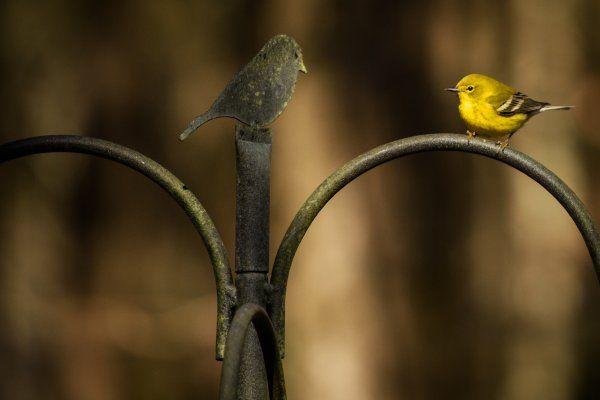This article appeared in Fay Observer.
Amber Williams laughs if someone calls her a "bird brain."
To the reigning queen of bird watchers at Lake Rim Park, it's a compliment.
Besides, she notes, this weekend she'll have lots of company. This weekend marks the Audubon Society's annual Great Backyard Bird Count, when everyone is invited to bird watch.

"It's a citizen science project," said Williams. "Anyone, no matter where they live or how experienced they are in bird watching, can be part of the weekend.
"All they have to do is keep an eye on their bird feeder and jot down the bird they see."
And, with temperatures, plunging through the weekend, those feeders are likely to be busy. Many birds in winter count on seeds left out for fuel to keep warm.
Each year, tens of thousands of bird lovers around the world spot birds in their backyards and report the results at ebird.org. The information helps avian experts keep track of the migratory habits and potential changes in wintering spots.
The count began more than a century ago. It's the longest-running citizen science survey in the world, according to Audubon North Carolina.
"It's an important part of keeping track of the population," Williams said.
Experts are particularly eager to see any changes that may have come with mild weather in early winter. In addition to the usual blue jays, chickadees and mockingbirds that call the Cape Fear region home, some offbeat birds might show up.
"Some migratory patterns may be a bit different this year," Williams said. "Ducks and geese delayed migratory routes with the warm weather in December. We may see more seagulls, as well."
Seagulls? So far from the sea?
"The name is a bit of a misnomer," she said. "They breed in the plants, and many live in our area. They're very adaptable. If it's a good spot with food, they're happy to stay put."
Last year, North Carolina was a feathered smorgasbord for viewing. A total of 205 different species of bird were counted, from the common catbird to the exotic yellow-crowned night heron.
In Cumberland County, birders spotted nearly 60 species, including the threatened red-cockaded woodpecker, a yellow-rumped warbler and everything from turkey vultures to a tufted titmouse.
The key, Williams said, is for spotters, especially novices, to have fun, take their time and try to get photos if they see something unusual.
"They have a number of filters in place, in case someone does see something rare," she said. "If someone reports something that seems way out of likelihood, odds are they're going to call and ask for more information.
"They're not asking because they don't believe you. They just want to make sure you saw what you 'saw.' If you made a rare discovery, they'd like to share it."
That was the case a few years ago, when a group of spotters saw a Lincoln's Sparrow for the first time in the Cape Fear region. Last year the sparrow was spotted closer to the coast.
The bird usually winters in Texas and Mexico, before returning to the Midwest. Finding them here two years running is highly unusual.
"That's one thing that's fun and a bit exciting," Williams said. "You never know, when you look at the feeder, who might be there."
Staff writer Chick Jacobs can be reached at jacobsc@fayobserver.com or 486-3515.



